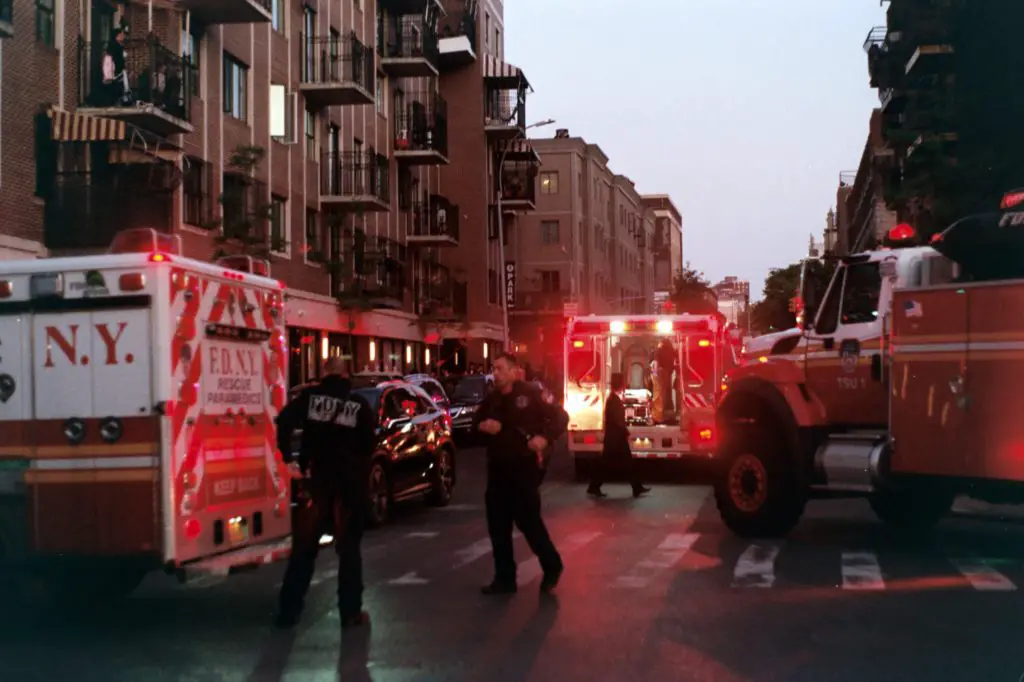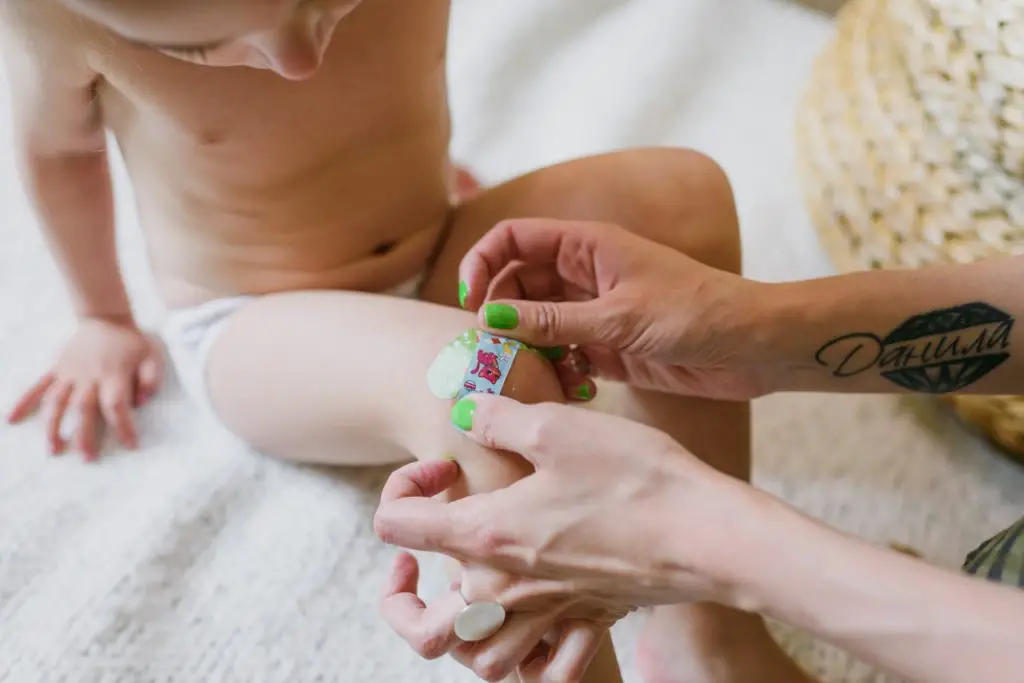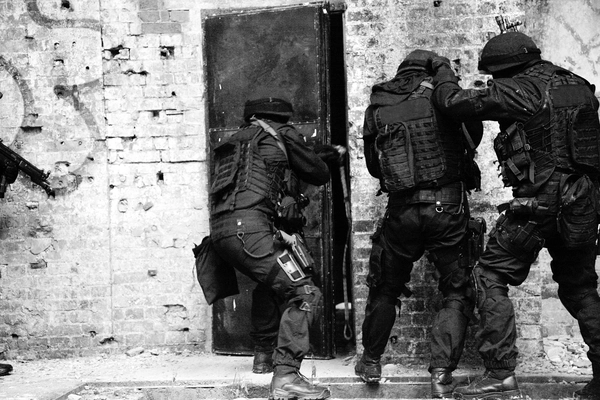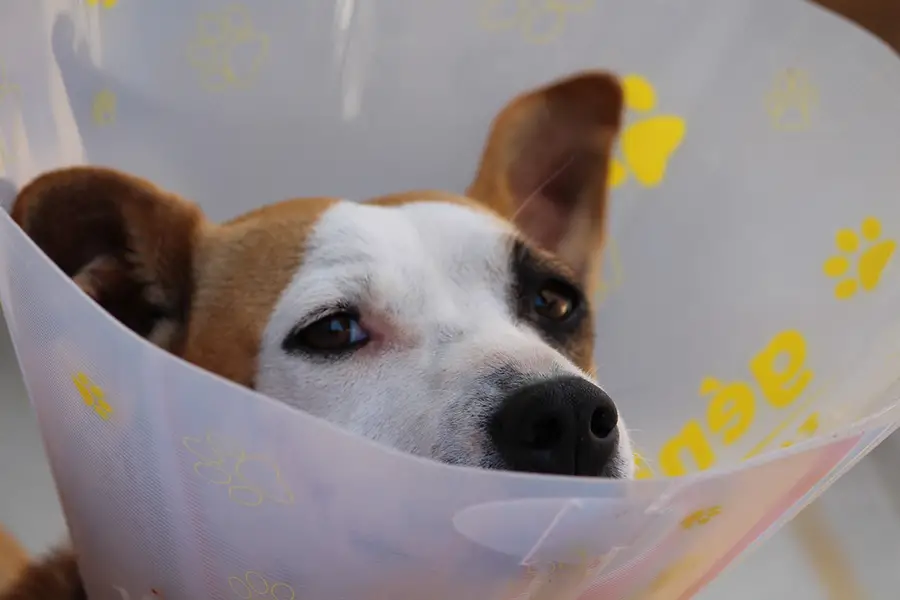It’s impossible to predict when a car accident will occur. In 2020 while more people were staying at home during the pandemic, 38,680 Americans were killed in motor vehicle accidents. This is the highest number of motor vehicle fatalities in America since 2007 and shows that more people died in car accidents when there were fewer people on the road! Because accidents can happen at any time, now is the best time to put together a first aid kit for your vehicle. And it may not just be used for the passengers in your car; it could be a pedestrian or cyclist struck by a vehicle, or you may be the first person to come upon an accident. However, you’re probably more likely to use your first aid kit for mundane injuries, like small cuts, a splinter, or a bee sting. Either way, you will be thankful to have the necessary items on hand to take care of your ailment and carry on with your day. Pairing your first aid kit with an adequate emergency kit is the best way to keep yourself, and those who travel with you, safe and prepared for any unfortunate situation. Below are essential items to help you build your own car first aid kit, or assess a premade kit that you are considering buying.
Car first aid kit items for day to day needs.
These are the basic items you’d expect to find in any first aid kit. They can take care of your average bumps, cuts, or ailments.
- Adhesive Bandages – This is your typical Band-Aid and they are used to cover and protect small scrapes and cuts. You can choose an adhesive bandage with an antibiotic coating on the pad in case you aren’t carrying antibiotic ointment. All kits should have a variety of sizes and shapes like the ones listed below.
- Typical strip bandage in variety of sizes like 1″x3″, 3/4″x3″, and 5/8″x2 1/4″
- Knuckle bandages
- Fingertip bandages
- Butterfly bandages/butterfly stitches to help close larger cuts
- Antiseptic Pads or Wash / Sanitizing Agent- The first step to taking care of any wound is to clean it. Not only that, these products can sanitize your hands or equipment. Individually packaged antiseptic wipes (like alcohol pads) are great for smaller kits, while larger kits can benefit from larger, liquid wash. This can be used to flush dirt or debris out of a wound and can work great when paired with a syringe.
- Gauze – Gauze is a sterile, absorbent pad used to protect larger wounds, to help absorb blood, and especially useful for larger, traumatic wounds. Having various sized pre-cut pads is useful while having a roll will be beneficial for more serious bleeding and will be more versatile.
- Medical / Surgical Tape – An adhesive tape used to hold gauze or bandages in place, and can even assist with splints. Like adhesive bandages, there a several types of tapes for different situations. Transpore tape is probably the best multi-purpose tape. It sticks to everything, it’s versatile, easy to tear, and water proof, although it’s not great for sensitive skin and can be hard to remove. Micropore tape is also good option as it’s gentle, breathable, hypoallergenic, and easy to remove, although it’s not waterproof and not very flexible.
- Antibiotic Ointment – Antibiotic ointment can be applied to the wound directly or to the bandage, and helps to protect the wound, keep it from sticking to the bandage, and promotes healing. Note that it isn’t meant for larger areas and is meant to be used on the surface. It can be sold as individual packets or in small tubes.
- Single Dose Medication Packets – Single packets make keeping count easy and makes it easy to hand out. Some medications to include:
- Motion Sickness Medication (like Dramamine) – Car sickness is common but be warned that some cause drowsiness and that it may not be a good idea for the driver
- Antihistamine (like Benadryl) to calm allergic reactions and can sometimes help with motion sickness
- Ibuprofen / NSAIDS for pain relief and inflammation
- Aspirin for pain relief and fever reduction
- Pepto-Bismol for diarrhea, upset stomach, nausea, and heartburn
- Caffeine Pills for when a power nap isn’t an option and a coffee shop isn’t in sight.
- First Aid Manual – When you’re on the road, your phone may not always be charged or you may not have service. In addition, taking the time to search the web on how to apply first aid and verify the source of the information is not time you’ll want to spend. Get yourself a first aid manual and familiarize yourself with it. It may be worth adding a survival guidebook for situations where you are far from help or if you break down in a remote location.
- Sun Block – Maybe you’re at the beach and forgot suntan lotion, or maybe you want protection when you have to walk to the nearest gas station. You could use a travel-size container or buy single-use packets.
- Personal Items – Ensuring that you have extra prescription medication on hand or an Epi-Pen at the ready can be critical. You might also include emergency contact information, blood type, allergies or your medical history.
- Tweezers – Should be easy to handle in stressful situations. Consider the use; we often think of them for splinters, but may be used for glass, dirt and other debris. They could also be used for stingers or tick removal.
- Scissors – Scissors are always useful for cutting bandages, tape, clothing, etc. Small trauma shears are probably the most universal. Try to find ones with blades that are small enough to fit under bandages close to the skin, but with blades large enough to cut clothing.
- Medical Grade Disposable Gloves – You’ll want these, especially if assisting strangers, to help stop the transfer of bacteria or dirt from you and they will also keep you from contracting something from them. Look for nitrile gloves as the victim may be allergic to latex or rubber.
- Hydrocortisone Cream / Calamine Lotion – Both can help with the itching associated with poison ivy, poison oak, insect bites, or rashes. Both are good options but remember that hydrocortisone cream is not good in areas prone to fungal infection like the genitals or between toes.
- Burn Gel – This should only be used on minor burns. It helps to relieve the pain and moisturize the burn to keep it from drying out.
- Toilet Paper / Feminine Products – Sometimes you’re out of options and you’ll be happy you have it.
- Consider your climate. Not having water in hot conditions, or extra gloves and a hat in cold conditions, can lead to weather related injuries and can make a bad situation worse. This is where your emergency kit comes in to play.
Car first aid items to respond to a car accident.
These are items geared towards responding to injuries due to serious car accidents. When responding to an accident, the best step you can take is to call for help. If the injured party is a stranger, it’s best to ask first before performing any first aid and only provide aid if the injuries are life-threatening. If you are in an area where help isn’t available or will be severely delayed, you may need to provide aid to the injured party. It’s best to only use items that you know how to use, or risk causing more harm.
- Hemostatic Agents – For traumatic injuries with severe bleeding, hemostatic agents are crucial to help the blood clot quickly. Hemostatic Agents can come in a powder form or gauze. Either one is good but the powder may be spilt or difficult to apply in windy situations while the gauze is slightly less versatile.
- Pressure Dressing – A pressure dressing is a flexible covering to place over gauze that can hold it in place and maintain pressure, allowing the first aid responder to move on to other tasks.
- Triangular Bandage – A triangular bandage is a large cloth bandage, typically around 40x40x56, that can be used as a sling, to help splint a broken limb, to wrap major wounds or around the head, or as a tourniquet. It’s also a good idea to keep safety pins in your kit to help secure the bandage in place.
- Mouthpiece for CPR – Another item to keep you and the victim safe from exchanging airborne or bodily fluid-borne bacteria, viruses, or diseases.
- Eye Pad – Useful to protect the eye after it has been flushed out and to help keep the injured person from touching it.
- Tourniquet – A device that can be quickly applied to a limb to stop severe bleeding. Although these can be improvised, purpose made tourniquets are less painful and less likely to cause additional injury to the victim.
- Space Blanket or Full Size Blanket – These can serve many uses in your vehicle but are added to this list as a first aid response to shock.
- Hot / Cold Packs – It’s a good idea to carry instant disposable cold packs and a re-usable heat pad that you snap to engage.
- Saline Solution – For cleaning wounds and flushing eyes. Although saline solution is less likely to freeze, it will in extreme environments.
- Glass Breaker – A small device with a metal tip designed to break glass. It could be helpful when extracting others, or yourself, from an accident.
- Seat Belt Cutter – A small, safe, cutting device designed to cut seat belts. Ideally you can find a glass breaker / seat belt cutter combo and keep it within reach at all times.
- Headlamp or Flashlight – Headlamps can help to keep your hands free while helping others or repairing your vehicle.
- Items to get the attention of help or other drivers – This starts to overlap with items to keep in a vehicle emergency kit, but getting help to the victim(s) as quickly as possible is a priority. You might consider using a whistle or road flares.
Why DIY your own car medical kit:
You may be tempted to just buy a pre-assembled kit to throw in your trunk and forget about, but it’s important to consider your specific needs:
- Perhaps you’re a “soccer-parent” and are always taking the kids to games or to practice. You may want to have a few items on hand specific to sports related injuries.
- Maybe you live in a remote location and can’t depend on a fast emergency response.
- If you’re a parent of a small child, you may want to keep some items on hand specific for children.
These are just a few examples, but will hopefully get you to consider your own specific needs. In addition, when you take the time to assemble your own kit, you can pack it in a way that makes sense to you. As you assembly it, you can take some time to become familiar with the tools, rather than seeing them for the first time in an emergency.
Be sure to check out 11 Reasons to DIY your first aid kit for more information!
Choosing a case for your car first aid kit.
Choosing a case is a personal decision based on how you prefer to organize the contents and where you plan to keep the first aid kit. You may want to consider a backpack if you think mobility is important. With a backpack, you can grab it and go, and it’s easy and comfortable to carry. For others, a hard-sided box may be better. If it’s going to be stored in your trunk, it may be susceptible to getting squished or damaged, and a hard case can keep it protected.
You should also consider the placement of your first aid kit within your vehicle. Maybe having a smaller one in the glove box is more useful so you can easily get to medications, an epi-pen, or a Band-Aid. A seat belt cutter in your trunk is useless if you’re stuck in the driver’s seat.
Common injuries due to car accidents.
It’s important to consider the types of injuries you may face when a vehicle accident occurs. The National Law Review, a source of legal news and analysis, lists the 8 most common car accident injuries as:
- Bruising / Contusions
- Whiplash
- Neck/Back injuries
- Concussions
- Traumatic Brain Injuries
- Post-Traumatic Stress Disorder
- Broken Bones
- Internal Bleeding
Source: 8 Most Common Car Accidents and What to Do About Them
Other injuries to consider are:
- Burns
- Road Rash
- Lacerations and bleeding, especially related to glass
Many of these injuries are not for the average person to directly perform first aid on. For example, it’s usually best to not move injured persons unless their life is in immediate life-threatening danger. This is because you risk causing further damage, especially in the case of spinal, back, and neck injuries.




